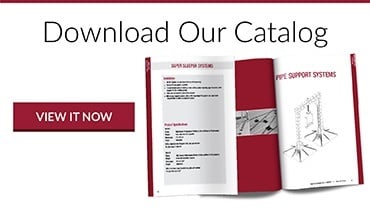Out of every surface on your building, your roof is the one that spends the most time exposed to rain and wind-driven moisture. There is absolutely no way to prevent water infiltration entirely, but there are ways to prevent most of it – and unless you try, your roof and its contents will quickly be eaten by rot and hazardous mold.
What Happens When You Don’t Control Moisture?
Failure to control moisture will result in mold growth, which will have negative side effects for your building and for your building tenants.
Your tenants may develop asthma, or the symptoms of asthma: wheezing, shortness of breath, and coughing. Shortly thereafter, you will develop the symptom of not having any tenants – no one wants to live or work in a building that makes them ill.
In addition, your building will develop symptoms. Moisture rots wood, so over time it will swell, bend, and crumble. It will slowly break concrete and brick, especially in climates that experience winter. It will rust metal, get into wiring, and cause electrical failures and worse. Insects will sense the building as a source of moisture and call it their home. Lastly, the moisture will begin to dissolve paint, destroying the aesthetics of your building alongside its structural integrity.
Want to know the worst thing? It may already be too late to prevent your building from experiencing these effects.
Most Leak-Prevention Efforts Fail
Here are some facts that building owners are certain to find depressing:
- 40% of buildings suffer problems with water intrusion – mostly via the roof
- 70% of construction lawsuits revolve around leakage
- As a result of leakage, most roofs only last 50% of their designed lifespan
Much of the time, the culprit is your architect. Many times, architects will not clearly specify how a roof’s edge is supposed to terminate. They pass the buck along to the contractor, who passes the buck to the roofing contractor. At the end of the day and if nothing changes, your roof’s edge will terminate in a thick layer of caulking and sealant – materials which are not supposed to last 20 years.
Here’s the good news – now that you know where the problem starts, you can begin to avoid it. Choosing the right architect will solve a lot of your problems, but there are other prevention steps you can take. These may include:
- Specifying Vapor Barriers
A vapor barrier is a thin layer of polymer material that adheres to the roof deck and repels moisture that seeps through the roofing substrate. A good product should seal around holes created by fasteners. - Eliminating Construction Moisture
If your building is made primarily of concrete, you’ll find that the material sheds a great deal of moisture as it cures. If the building is completed before the concrete dries, that moisture is effectively sealed in. Consider installing an industrial dehumidifier on a temporary basis during construction in order to eliminate moisture from curing concrete. - Balance Insulation and Venting
In general, the cavity under your roof needs to be roughly the same temperature as the air above your roof. This prevents condensation from settling on or under the roof and infiltrating. Depending on your weather conditions, this means balancing your roof, insulation, and venting (if applicable), so that you can keep your roof’s temperature stable and maintain the comfort of your occupants at the same time.
The last component of moisture prevention is regular inspection. Even a well-built roof that uses the right materials may still suffer moisture damage over time – which means you need to have someone get on the roof and physically check to see if there’s pooling or other signs of damage.
Inspect Your Roof Safely with PHP Systems Design
Sending people to inspect your roof isn’t a cut-and-dried process. It must be performed safely, with an eye towards trip hazards and other dangers. PHP Systems Design is here to help. Our roof access walkways are easy to integrate into roofing structures, require no fasteners (which can invite moisture infiltration) and carry workers safely over a roof’s many hazards.



